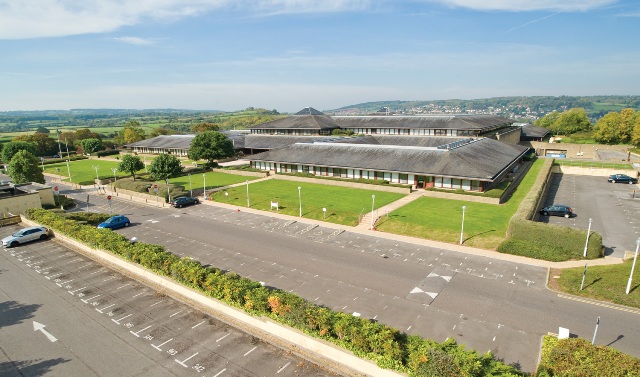The 1970s former Central Electricity Generating Board building at Bedminster Down has been awarded a Grade II listing as one of the most important office buildings of its era.
The office development off Bridgwater Road, now called The Pavilions, is among 12 commercial buildings named as representing the finest post-war office buildings in England on a new list that celebrates the work of leading modern architects.
The landmark CEGB building was built between 1975 and 1978 to a design by renowned architects Arup Associates for what was then the state-run power company Central Electricity Generating Board Building (CEGB).
After the CEGB was privatised in the 1990s as part of the sell-off of nationalised industries, private sector tenants moved in, including global drinks giant Allied Domecq.
Today the building is occupied by a number of organisations including investor services group Computershare. It is the only building in the South West to appear on the new list and one of four buildings designed by Arup.
It was listed by heritage minister Ed Vaizey on the recommendation of English Heritage.
Mr Vaizey said: “Listed buildings are not just about historic houses and ancient monuments, they also serve to protect our recent heritage and preserve the best examples of our fantastic architecture.
“This group of listings reflect the changing face of our working environment and represent the very best in design and it’s entirely right that they be listed Grade II.”
The listing of modern buildings follows lobbying by English Heritage to assess commercial buildings of 1964 to 1984.
It said: “Office buildings shape the face of our cities and today’s listings have ensured that this area of architectural achievement is recognised for future generations. Listing helps the nation acknowledge and understand its shared history.
“It marks and celebrates a building’s special architectural and historic interest, and also brings it under the consideration of the planning system, so that some thought will be given to its future when change is underway.”
English Heritage was very selective in which buildings were recommended to the Department for Culture, Media and Sport as the threshold for special architectural or historic interest in recent buildings is particularly high. From the original research it selected 23 buildings for assessment.
Buildings generally become eligible for listing once they pass 30 years from the start of construction, and the earlier on owners can establish whether their building is likely to become listed, the earlier on they can start to plan. This is helps owners and occupiers of commercial buildings as they are especially prone to frequent adaptation.
With modern offices, the special interest is often concentrated in certain parts of the building: it might be just the lobby, boardroom and façade, that are of special interest – meaning parts of the building are not of interest and can therefore be changed without consent.
Pictured: The former Central Electricity Generating Board building, now called The Pavilions. Photo by Steve Blake – Blake Photography































